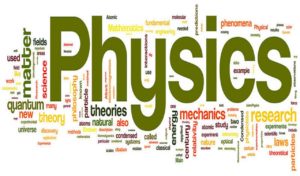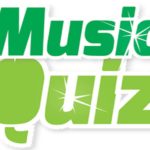118 Physics Quiz Questions Answers – Learn about Physics

History of Physics Quiz Questions – Physics Questions 1-30
Department of Physics harvard University
1) Who was the first pre-Socratic philosopher to suggest that matter could neither be created nor destroyed?
Answer: Parmenides.
2) In 1729 AD, Pieter Van Musschenbroek used the term ‘PHYSICS’ for the first time. What was the subject called so far?
Answer: Natural philosophy.
3) Which Greek philosopher suggested that the material world was composed of four basic elements – air, water, fire and earth?
Answer: Empedocles.
4) Who in 1231 was the first to describe the science of optics?
Answer: Robert Grosseteste.
5) Who was burnt to death for suggesting that the sun might be an ordinary star?
Answer: Giordano Bruno.
6) Who in 1643 was the first person to create vacuum above the liquid?
Answer: Evangelista Torricelli.
7) Who in 1786 invented the gold leaf electro scope?
Answer: Abraham Bennet.
8) Who encouraged Newton to write his idea for principia?
Answer: Edmund Halley.
9) Who in 1808 discovered polarization of light and introduced the term ‘Polarization’?
Answer: Etienne-Louis Malus.
10) The first scientist to apply scientific reasoning to cosmology was Rene Descartes. What was his theory called?
Answer: Vortex Theory.
11) In which year did Otto Von Guericke demonstrate his famous Magdeburg experiment dealing vacuum?
Answer: 1672.
12) Who was the first to attack Newton’s Corpuscular theory of light?
Answer: Thomas Young.
13) Who was the first person to design models of flying machine?
Answer: Leonardo da Vinci.
14) Who in 1749 developed a method for making an artificial magnet?
Answer: John canton.
15) Hydrodynamica gave explanation of Bernoulli’s theorem in 1738. Who was the first to suggest this theorem?
Answer: Daniel Bernoulli.
16) Who invented Leyden jar?
Answer: Pieter Van Musschenbroek and Ewald Georg von Kleist.
17) Which famous Danish physicist in 1675 measured the speed of light?
Answer: Romer.
18) What did Sir William Herschel discover in 1800?
Answer: Infra-red radiation.
19) In which year did G.S. Ohm formulate Ohm’s law?
Answer: 1827.
20) In which year did A. Michelson and E. Morley conduct their experiment to verify the existence of ether?
Answer: 1887.
21) Who in 1939 suggested the name meson for middle-weight particles?
Answer: Homi J. Bhabha.
22) What is the importance of 2nd December 1942?
Answer: The creation of the first controlled chain reaction.
23) Which philosopher conjectured that if the moon did not move, it would fall upon the earth?
Answer: Anaxagoras.
24) Who said, “A bird is an instrument working according to the mathematical laws”?
Answer: Leonardo da Vinci.
25) Who said, “All falling bodies, irrespective of their size, descend at the same speed”?
Answer: Galileo Galilei.
26) Which Austrian physicist developed the philosophy that all knowledge is simply sensation?
Answer: Ernest Mach.
27) Who contemplated “A freely floating magnet orients itself in the north-south direction?
Answer: Robert Norman.
28) Who gave the idea “Electricity flows through space from heated metal”?
Answer: Thomas Alva Edison.
29) “Moving particles have wave characteristics.” Who proposed the idea first?
Answer: Victor de Broglie.
30) Who suggested that light is made up of packets of energy known as protons?
Answer: Albert Einstein.
Physics Quiz Questions Atomic Structure – Physics Questions 31-60
31) Who first gave the concept of ‘Atom’?
Answer: Kanada.
32) How many times is the proton heavier than the electron?
Answer: 1836 times.
33) What is AMU?
Answer: It is the unit of atomic mass.
34) The energy released from the sun and the other stars is due to what?
Answer: Nuclear fusion.
35) The force that tends to make a nucleus fly apart?
Answer: Electrostatic repulsion.
36) Which force is responsible to keep the atomic nuclei together?
Answer: Nuclear force only.
37) How do the electrons move according to the Rutherford model of the atom?
Answer: Electrons orbit the positively charged nuclei.
38) What does the phenomenon of photo-electric emission establish?
Answer: The quantum nature of light.
39) When does the emission of energy take place?
Answer: An electron jumps from the higher orbit to the lower orbit.
40) What did Rutherford’s gold foil experiment prove?
Answer: Positively charged protons are contained in the nucleus of the atom.
41) What are Alpha particles?
Answer: Helium nucleus.
42) How does Alpha, Beta and Gama radiations come out of a radioactive substance?
Answer: spontaneously.
43) Where is installed the most powerful accelerator, the atom smasher?
Answer: Illinois, USA.
44) Where in India is cyclotron, the particle accelerator machine installed?
Answer: Kolkata.
45) X-rays consists of what?
Answer: Electromagnetic radiations.
46) What are cosmic rays?
Answer: High energy particles.
47) Who discovered positron?
Answer: Anderson.
48) What is ratio of the frequencies of the long wavelength limits of the Hyman and Balmer series of hydrogen?
Answer: 5:27
49) What is called the law of equivalence of mass and energy?
Answer: Einstein’s law.
50) What is known as, no two fermions can exist in identical quantum states?
Answer: Pauli Exclusion Principle.
51) What is called the Weinberg and Salam theory unifying electromagnetic forces and weak nuclear interaction?
Answer: Electroweak theory.
52) What is the name of the hypothetical theory that would unify all the fundamental forces of nature?
Answer: super grand unified theory.
53) What is called exchange of energy between one particles and an electromagnetic wave?
Answer: Interaction.
54) What does Frank-Hertz experiment establish?
Answer: The Frank-Hertz experiment establish that there are discrete energy levels in atoms.
55) In which regions of the spectrum, Hyman and balmer series lie?
Answer: They lie in ultraviolet and visible regions respectively.
56) In which regions of the spectrum, the Paschen series lies?
Answer: In ultraviolet and infra-red.
57) Who gave principle that “any given quantum orbit in an atom can be occupied by no more than two electrons”?
Answer: Pauli.
58) Who introduced the concept of electron spin?
Answer: Uhlenbeck and Goudsmit.
59) In which form is energy radiated from a source?
Answer: Photons.
60) What must we consider to explain fine structure of the spectrum of hydrogen atom?
Answer: Spin angular momentum.
Physics Quiz Questions Uses of Measuring and Other Instruments – Physics Questions 61-88
61) What is the use of Altimeter?
Answer: To measure the altitude.
62) What is the use of Ammeter?
Answer: To measure the flow of electric current.
63) What is the use of Anemometer?
Answer: To measure the speed or force of the wind.
64) What is the use of electroscope?
Answer: To measure the electrostatic charge.
65) What is the use of Calorimeter?
Answer: To measure the amount of heat.
66) What is the use of Speedometer?
Answer: To indicate the speed of a vehicle.
67) What is the use of Rectifier?
Answer: It is an apparatus for condensing a hot vapor to a liquid in distillation.
68) What is the use of Gyroscope?
Answer: To illustrate dynamics of rotating bodies.
69) What is the use of Barometer?
Answer: To measure the atmospheric pressure.
70) What the use of Fathometer?
Answer: To measure the depth of water.
71) What is the use of Periscope?
Answer: To observe objects on the surface from the submarine.
72) What is the purpose of Mariner’s compass?
Answer: To find the direction of the ship in the sea.
73) What is the use of Stereoscope?
Answer: To see the photos taken by two cameras placed at two different angles.
74) What is the use of Callipers?
Answer: To measure the internal and external diameter of a tube.
75) What is the purpose of a Geiger counter?
Answer: To detect and count nuclear particles and radiation.
76) What is the use of Cardiograph?
Answer: It is an instrument to record the beats of heart.
77) What is the use of Audiometer?
Answer: To measure the intensity of sound.
78) What is the use of Saccharometer?
Answer: To determine the sugar concentration in a liquid.
79) What is the use of Photometer?
Answer: To measure the intensity of light.
80) What is the use of Hygrometer?
Answer: To measure the humidity of atmosphere.
81) What is the use of Crescograph?
Answer: To measure the growth of plants.
82) What is meant by Bean fort scale?
Answer: To measure the scale of wind velocity.
83) What is the use of Galvanometer?
Answer: To measure electric currents.
84) What is the use of Epidiascope?
Answer: To project slides and opaque objects like graphs maps etc. on screen.
85) What is the use of Gravimeter?
Answer: To measure the quantity of oil under water.
86) What is the use of Odometer?
Answer: To measure the distance covered by a vehicle.
87) What is the use of Microscope?
Answer: To magnify tiny objects.
88) What is the use of Microphone?
Answer: A device used in sound reproduction systems for converting sound in to electrical energy.
Physics Quiz Questions Work Power and Energy – Physics Questions 89-118
89) What do you mean by the rate of work done?
Answer: Power.
90) What is the collision when two bodies stick together after the collision?
Answer: Inelastic.
91) What do you mean by the third order of levers?
Answer: The effort is in between the resistance and the fulcrum.
92) What changes is done by a dynamo?
Answer: Mechanical energy is converted in to electrical energy.
93) Which is the main source of energy to earth?
Answer: Sun.
94) If velocity of a moving body is made 3 times, what happens to its kinetic energy?
Answer: K. E will increase 9 times.
95) Write an example of a third order of lever.
Answer: Forceps, ice tongs, hook and rod.
96) Write an example of second order.
Answer: Nut cracker.
97) What is the unit of work in the C.G.S system?
Answer: Erg.
98) By what type of force the work is done when a body falls freely?
Answer: Gravitational force.
99) What is equal to one watt?
Answer: One joule/second.
100) One H.P is equal to what?
Answer: 746 Watts.
101) What is called the capacity to do work?
Answer: Energy.
102) What is called the energy possessed by a body because of its velocity?
Answer: Kinetic energy.
103) What is called the energy possessed by a body because of its position?
Answer: Potential.
104) What does the kinetic energy of a body depend on-horseback?
Answer: It depends on its mass and velocity.
105) What happens when the height of a body from the ground is doubled?
Answer: Potential energy is also doubled.
106) What is the P.E of a body on the ground?
Answer: Zero.
107) In the interior of the sun, which reaction takes place?
Answer: Nuclear fusion.
108) In the sun, which is converted in to energy?
Answer: Matter.
109) In the core of the sun, hydrogen nuclei fuse together to form which nuclei?
Answer: Helium.
110) What is called a device which reduces human effort?
Answer: Machine.
111) What is called the rigid code that can rotate about a fixe point, fulcrum?
Answer: Lever.
112) What is called the force overcome by a lever?
Answer: Resistance.
113) In the first order of levers, what is between the resistance and the effort?
Answer: Fulcrum.
114) What is called the ratio of the resistance to the effort when they balance each other?
Answer: Mechanical advantage of a simple machine.
115) What is called the perpendicular distance from effort to fulcrum?
Answer: Effort arm.
116) Write an example of second order of levers?
Answer: Lime squeezer.
117) Write some example of the first order levers?
Answer: Balance, scissors, spanner.
118) State the law of conservation of energy.
Answer: Energy can neither be created nor destroyed.



Wonderful effort. You are doing a great job you have done for every who has the burning desire for learning different subjects. Although I will be stepping into 69 next year, however, I am addicted to study Physics, Math and Chemistry. I did my M.Sc. in CHEMISTRY and MBA in FINANCE. I am a Canadian Citizen and live in Toronto, Ontario – CANADA.